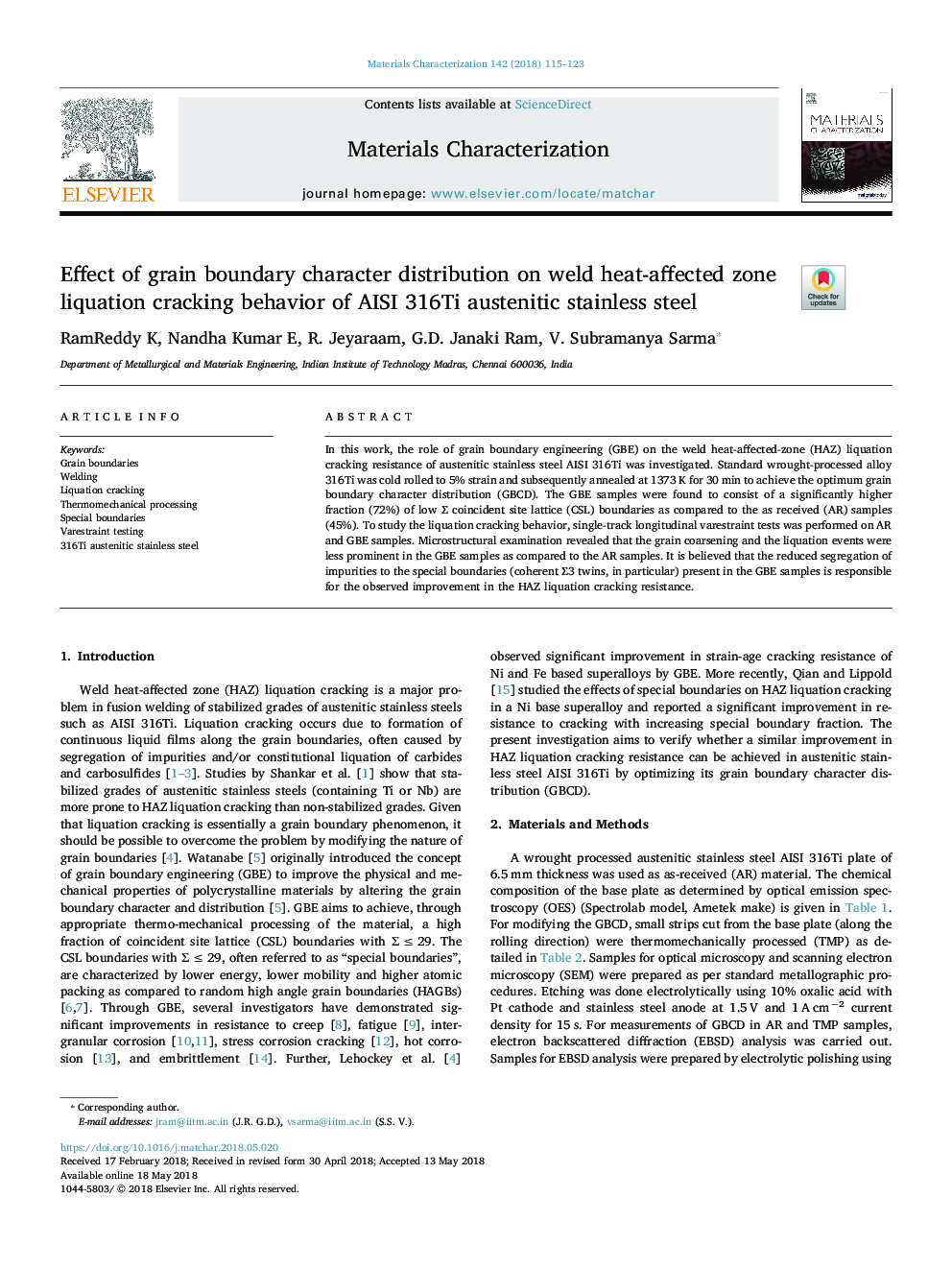| Article ID | Journal | Published Year | Pages | File Type |
|---|---|---|---|---|
| 7968973 | Materials Characterization | 2018 | 9 Pages |
Abstract
In this work, the role of grain boundary engineering (GBE) on the weld heat-affected-zone (HAZ) liquation cracking resistance of austenitic stainless steel AISI 316Ti was investigated. Standard wrought-processed alloy 316Ti was cold rolled to 5% strain and subsequently annealed at 1373â¯K for 30â¯min to achieve the optimum grain boundary character distribution (GBCD). The GBE samples were found to consist of a significantly higher fraction (72%) of low Æ© coincident site lattice (CSL) boundaries as compared to the as received (AR) samples (45%). To study the liquation cracking behavior, single-track longitudinal varestraint tests was performed on AR and GBE samples. Microstructural examination revealed that the grain coarsening and the liquation events were less prominent in the GBE samples as compared to the AR samples. It is believed that the reduced segregation of impurities to the special boundaries (coherent Æ©3 twins, in particular) present in the GBE samples is responsible for the observed improvement in the HAZ liquation cracking resistance.
Related Topics
Physical Sciences and Engineering
Materials Science
Materials Science (General)
Authors
RamReddy K, Nandha Kumar E, R. Jeyaraam, G.D. Janaki Ram, V. Subramanya Sarma,
